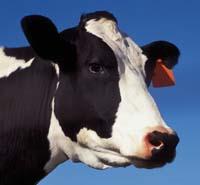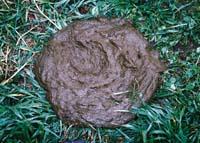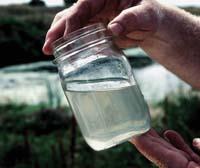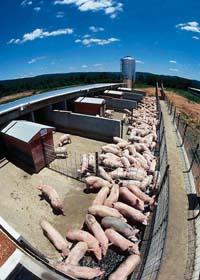Shade of animal growth in the environment

And yes, the data is also correct. FAO itself also stands out. But behind the data is a deep report by the FAO, the Livestock's long shadow, or, more or less, the long shade of animals that human beings raise to eat. And this explains, among other things, why they have come to the conclusion that livestock contributes more than traffic to the greenhouse effect.
The methodology used was the collection of gas emissions from the entire animal feed chain. First, the spillage in feed production has been taken into account, including the production of chemical fertilizers, deforestation for the creation of pastures and fields of cultivation and the degradation of pastures. Subsequently, livestock growth has increased its emission, taking into account both the gases generated in the animal intestine and the nitrous oxide released by the feces. Finally, the discharges from the manufacture and transport of animal products have been added.
The sum result is that the livestock sector is responsible for 18% of greenhouse gas emissions. And, according to FAO, transport as a whole generates less. Specifically, livestock generates 9% of the carbon dioxide generated by human activities, and produces in a greater proportion other gases that contribute even more to the greenhouse effect than carbon dioxide.
These gases are methane and nitrous oxide. The first affects the greenhouse effect 23 times more than carbon dioxide and nitrous oxide 296 times more. And cattle produce lots of methane and nitrous oxide. FAO estimates that 37% of the methane released in human activities is produced in the intestine of livestock. Cattle are also the origin of 65% of nitrous oxide, mainly released by feces.

However, livestock is also the origin of two-thirds (64%) of ammonia emissions from human activities. FAO has also recalled that ammonia has a great responsibility in acid rain and acidification of ecosystems.
Land and water
This is the explanation of this striking fact that was disseminated in the media. The report, however, contains many other data of interest. For example, in addition to the atmosphere, the influence of livestock growth on soil and water has been analyzed.
Of all sectors, livestock is the one that occupies the most soil. Pastures occupy a quarter of the surface without ice, while forage crops occupy a third of the surface suitable for planting. Thus, man devotes 70% of agricultural land and 30% of the total area to livestock farming.
In addition, if the recent trend is maintained, livestock will gain ground. In fact, population growth and change in eating habits have caused demand for animal products to increase considerably. In response, FAO believes that the sector has experienced strong and rapid growth in recent decades and will continue to: Announces that by 2050 meat and milk production will double.

However, the problem is not only that the sector has grown a lot, which has environmental consequences. The problem is also how it grows. In fact, technological and geographical changes are occurring in livestock growth that increase the environmental impact of the activity.
Even though pasture farming still has a large space, intensive barn farming is imposing. At the same time, production is moving from rural to urban areas, increasing the growth of fast-growing species such as pigs and chickens.
In fact, intensive production and production close to the place of consumption contribute to the correct management of resources and waste. However, in reality, pressure on the environment has increased as a result of these changes.
In water, for example, it has a great influence. According to FAO, the most polluting activity of water is probably considered as a whole. Eutrophication, the "death" of coastal areas, the degradation of corals, resistance to antibiotics, etc., are problems in which the contamination produced by livestock growth in water has a great influence.

The main origins of this contamination are animal droppings, manure and other organic residues, hormones and antibiotics used in animal husbandry, pesticides and fertilizers used in pasture plantations and sediments from eroded pastures.
On the other hand, livestock makes the soil compacte and erode, losing the vegetation cover, which prevents water filtration. Therefore, drinking water is reduced in the subsoil and in the sources, also increasing the risk of flooding.
Biodiversity threatened
As in recent years there has been a significant loss of soil, forests, drinking water, atmosphere, etc., there has also been a loss of biodiversity. According to the FAO report, species loss is 50 to 500 times higher than what has been observed so far in the fossil record. From the point of view of ecosystem services, it considers that the benefits that nature brings to human beings, 15 of the 24 main ecosystem services, are in decline.
Animals raised by humans to feed today account for about 20% of terrestrial animals, while 30% of newly occupied lands were home to the first wild animals. In fact, livestock farming is one of the main causes of biodiversity loss for FAO. In addition to the above-mentioned factors - forest loss, soil erosion, water and atmosphere pollution, etc. -, FAO has explained other factors that influence biodiversity loss, such as responsibility for the propagation of invasive species, and competition between animals and wild animals to use the same resources. For this reason, conflicts between farmers and conservationists occur in many places.

Looking for balance
To know where the relationship between livestock and the environment will go, we will have to see what happens in the sokatira between two applications. At one end of the rope is the demand for animal products and at the other end is for environmental services.
Given that natural resources are limited, FAO believes that the key is to better exploit resources. Thus, it proposes a series of technical improvements to increase operational efficiency.
However, the soil, water and food used in livestock farming are too cheap and prices do not reflect the actual lack. Consequently, they are used disproportionately and no effort is made to make the processes more efficient. Therefore, as explained in the report, environmental protection policies should set prices appropriate to natural resources so that the price is equivalent to value.

An adequate policy of grants and fines would contribute significantly to better resource exploitation and an effort to improve process efficiency. Finally, FAO believes that consumers also have something to say. This is because consumers can promote environmentally responsible behavior. And not just for taking care of the environment, but for themselves.
It seems that demand for environmental services is growing. FAO announces an evolution in this demand. First, demand growth is due to short-term interests such as mosquitoes and odors. Subsequently, consumers demand water and clean air and finally worry about general and longer-term issues such as climate change and biodiversity loss.
If the FAO vision is correct, as we are all consumers, we are all responsible for the shadow of livestock growth in the environment. And also to reduce that shadow.






